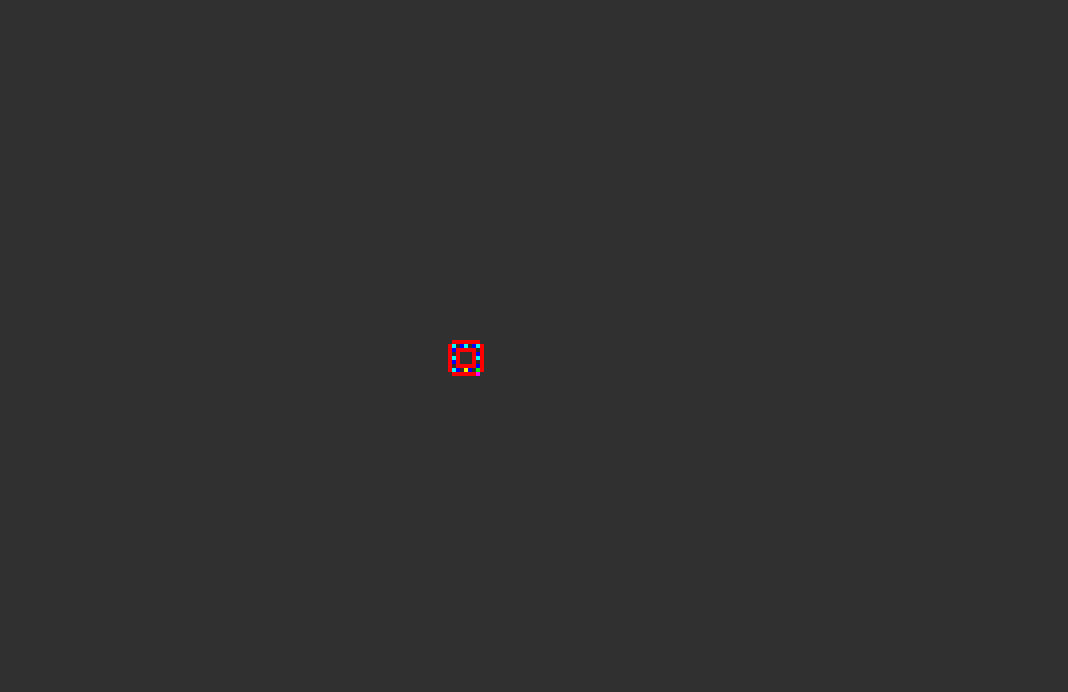Keg, 18 15 14 13SBCS 11 10SBCS 9SBCS 6SBCS bytes
`④⑩`④⑩
Try it online!
I've gone and done it now! No more ascii around here now folks. This will print:
`④⑩`④⑩④⑩
Which will print:
`④⑩`④⑩`④⑩`④⑩④⑩
Which prints:
`④⑩`④⑩`④⑩`④⑩`④⑩`④⑩④⑩④⑩
And so on.
Answer History
9 bytes
`::.,`⑵④⑩
This uses the same approach as the 10 byte answer
Explained
`::.,`⑵④⑩
`::.,` #Push the string `::.,`
⑵ #Double the string
④⑩ #Print raw then nice without popping
10 bytes
`::.,`⑵:.,
This prints:
`::.,::.,`::.,::.,
Which prints:
`::.,::.,`::.,::.,`::.,::.,`::.,::.,
11 bytes
`::.,`6*:.,
This prints:
`::.,::.,::.,::.,::.,::.,`::.,::.,::.,::.,::.,::.,
Which prints:
`::.,::.,::.,::.,::.,::.,`::.,::.,::.,::.,::.,::.,`::.,::.,::.,::.,::.,::.,`::.,::.,::.,::.,::.,::.,`::.,::.,::.,::.,::.,::.,`::.,::.,::.,::.,::.,::.,`::.,::.,::.,::.,::.,::.,`::.,::.,::.,::.,::.,::.,`::.,::.,::.,::.,::.,::.,`::.,::.,::.,::.,::.,::.,`::.,::.,::.,::.,::.,::.,`::.,::.,::.,::.,::.,::.,
And so on
Try it online!
13 bytes
`::.,`!⑨*:(.,
Try it online!
This prints:
`::.,::.,`::.,::.,
Which prints:
`::.,::.,`::.,::.,`::.,::.,`::.,::.,
And so on.
14 bytes
`::.,(:.,)`:.,
Try it online!
This will create pretty much the same chain as the previous 15-byter.
15 bytes
`::.,(::.,)`:.,
This prints:
`::.,(::.,)`::.,(::.,)
Which prints:
`::.,(::.,)`::.,(::.,)`::.,(::.,)`::.,(::.,)
And so on.
Try it online!
18 bytes
`:::.,(!2/|.,)`:.,
Try it online!
This will print
`:::.,(!2/|.,)`:::.,(!2/|.,)
Which in turn prints:
`:::.,(!2/|.,)`:::.,(!2/|.,)`:::.,(!2/|.,)`:::.,(!2/|.,)
Which then prints:
`:::.,(!2/|.,)`:::.,(!2/|.,)`:::.,(!2/|.,)`:::.,(!2/|.,)`:::.,(!2/|.,)`:::.,(!2/|.,)`:::.,(!2/|.,)`:::.,(!2/|.,)
And so on.
Try it online!

4@Kevin, The definition is recursive. The output should be a program whose output is larger than itself, and an answer to this question. So the output's output should be larger than the output, and the output's output's output should be even larger, etc. – ugoren – 2014-02-23T10:55:34.613
Damn. Wanted to do this in Brainfuck. Took me almost half an hour to figure out that it is impossible to do so. :D – Johannes H. – 2014-02-23T21:31:14.310
(or, well, at least almost impossible. YOu CAN create a Quine in BF, so this should be possible, too, but it'S too much work to bother with it) – Johannes H. – 2014-02-23T22:00:29.223
8I think you should clarify your rules. On one hand, any additional code output by such a program is "obviously useless"; on the other hand, all additional code in the output is "useful" in that it furthers the goal of answering this challenge. – Jason C – 2014-02-23T22:29:46.090
@JohannesH. A selection of Brainfuck quines can be found here: http://esoteric.sange.fi/brainfuck/bf-source/quine/
– Jason C – 2014-02-24T00:14:33.2335Sorry for destroying your challenge.
:^)– Justin – 2014-02-24T05:03:04.3502I think this challenge would be much better as a popularity contest than a code golf. It would allow for a lot more creativity! – corsiKa – 2014-02-24T23:44:25.827
@corsiKa I will think about it. – PyRulez – 2014-02-24T23:45:16.410
33Naturally, such a program should be known as a quinine. – Jonathan Van Matre – 2014-02-25T05:05:37.893
Does a program which prints its source and a comment count? For example: (bash)
cat %0 & echo \#comment. – facepalm42 – 2019-09-06T06:01:31.5301@facepalm42 Quine challenge answers are forbidden from reading their own source code, which makes comments tricky to use here. – Ørjan Johansen – 2019-11-09T01:02:16.887